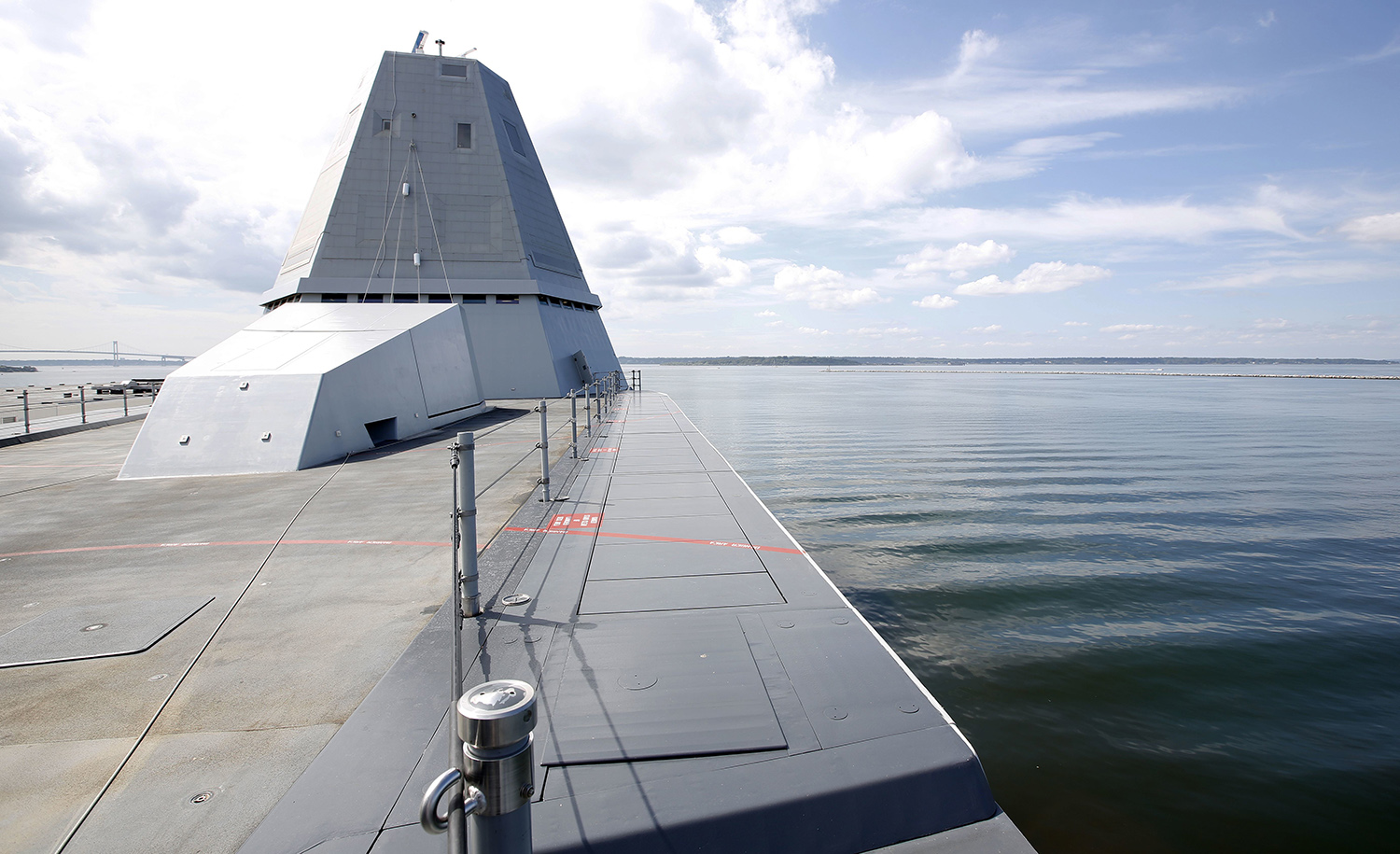More bad news for the DDG-1000 program broke yesterday, when the USS Zumwalt broke down while transiting the Panama Canal. The incident happened as the stealthy destroyer negotiated the Miraflores locks on the Pacific side of the canal. The ship had to be towed to the port of Rodman (old Balboa Naval Station) for repairs.
Navy Times initially reported that the ship’s heat exchangers experienced a failure. These critical components of the ship’s exotic integrated power plant produce a whopping 78 megawatts of electricity that power everything from the ship’s propulsion to sensors–and potentially even weapons in the future. Now, USNI News reports that water intrusion was noticed in two of the the four major bearings that connect the ship’s Advanced Induction Motors that drive the ship’s shafts, both of which subsequently locked up.
Apparently, as result of the mechanical failure, Zumwalt had a collision with the lock walls resulting in some form of damage, although at this point the collision is being called minor.
Commander Ryan Perry, a spokesperson for the Navy’s Third Fleet stated the following on Monday:
“Vice Adm. Nora Tyson, commander, US Third Fleet, has directed USS Zumwalt (DDG 1000) to remain at ex-Naval Station Rodman in Panama to address engineering issues that occurred while transiting the Panama Canal. The timeline for repairs is being determined now, in direct coordination with Naval Sea Systems and Naval Surface Forces. The schedule for the ship will remain flexible to enable testing and evaluation in order to ensure the ship’s safe transit to her new homeport in San Diego.”
This schedule has now been determined to include ten days for repairs in Rodman before the ship can hopefully continue on its way to San Diego.

It is not the first time Zumwalt has had a high-profile breakdown, and just weeks ago another incident involving a new US Navy ship occurred in the Panama Canal, when Littoral Combat Ship USS Montgomery suffered a fissure in its hull. The break was the second in just a month’s time for the Montgomery, this one a result of hitting a concrete wall in one of the canal’s locks.
The Zumwalt class is just a shell of its intended self, with many capabilities left on the table during the latter years of the ship’s design and construction. Just recently it was disclosed the the ship’s twin Advanced Gun Systems, which basically take up the forward third of the vessel, will not have any ammo to fire.
There are logical alternatives to the AGS–but installing them would require time and money. The time to do so is nearing as the ship–just commissioned on October 15th–will be in dry dock in San Diego for about a year once it arrives. This down period will be used to install many of the ship’s one-off combat systems.

In the end, all this could be for not, as the class of just three ships is looking more and more like an experimental program than an operational one. Depending on how the new administration views DDG-1000, ships could even end up being cannibalized for parts to keep one or two operational–or retired prematurely altogether due to high operating and sustainment costs. On the other hand, the White House could revise the Navy’s myopic reliance on a further outgrowth of the already mature Arleigh Burke class destroyer design (known as Flight III ships) and bring DDG-1000 up to its long intended potency–and even build more of the class altogether.
We will just have to wait and see.
Contact the author Tyler@thedrive.com
